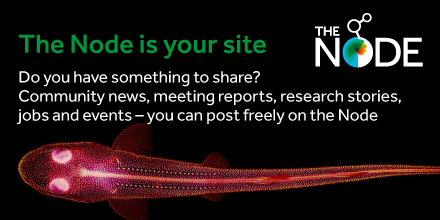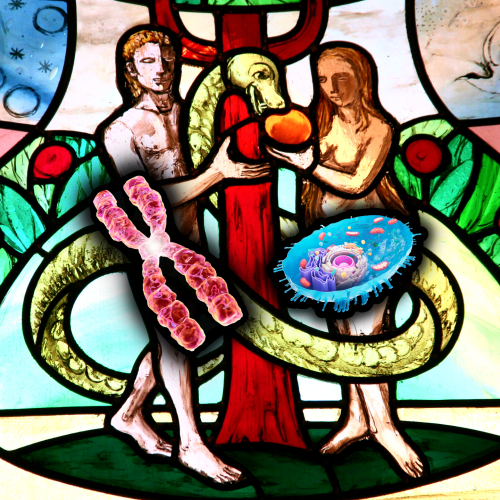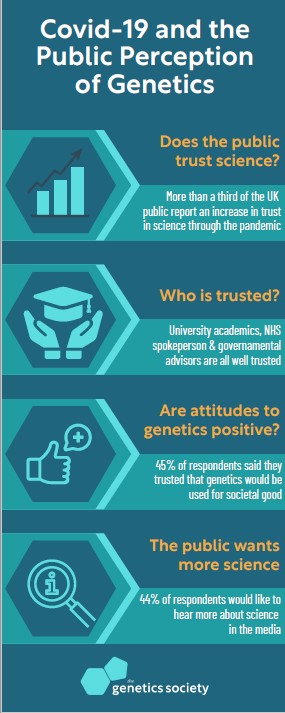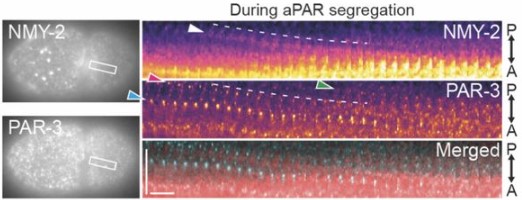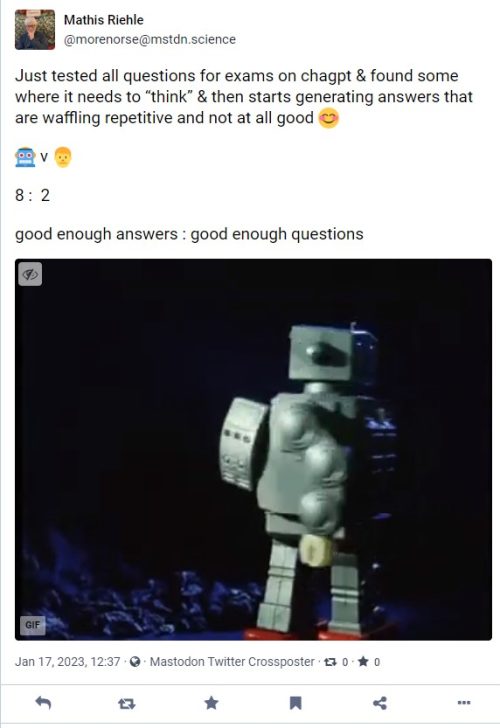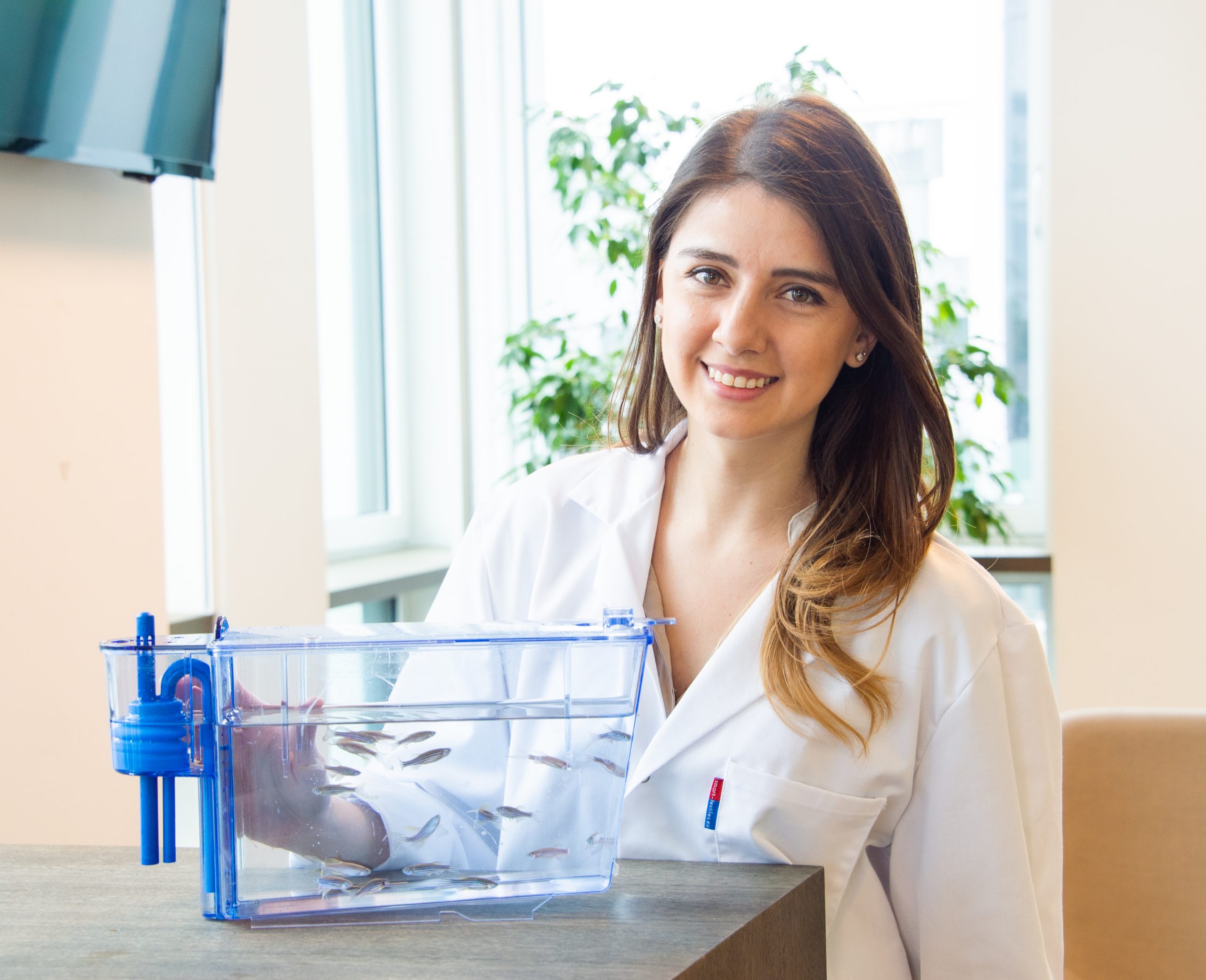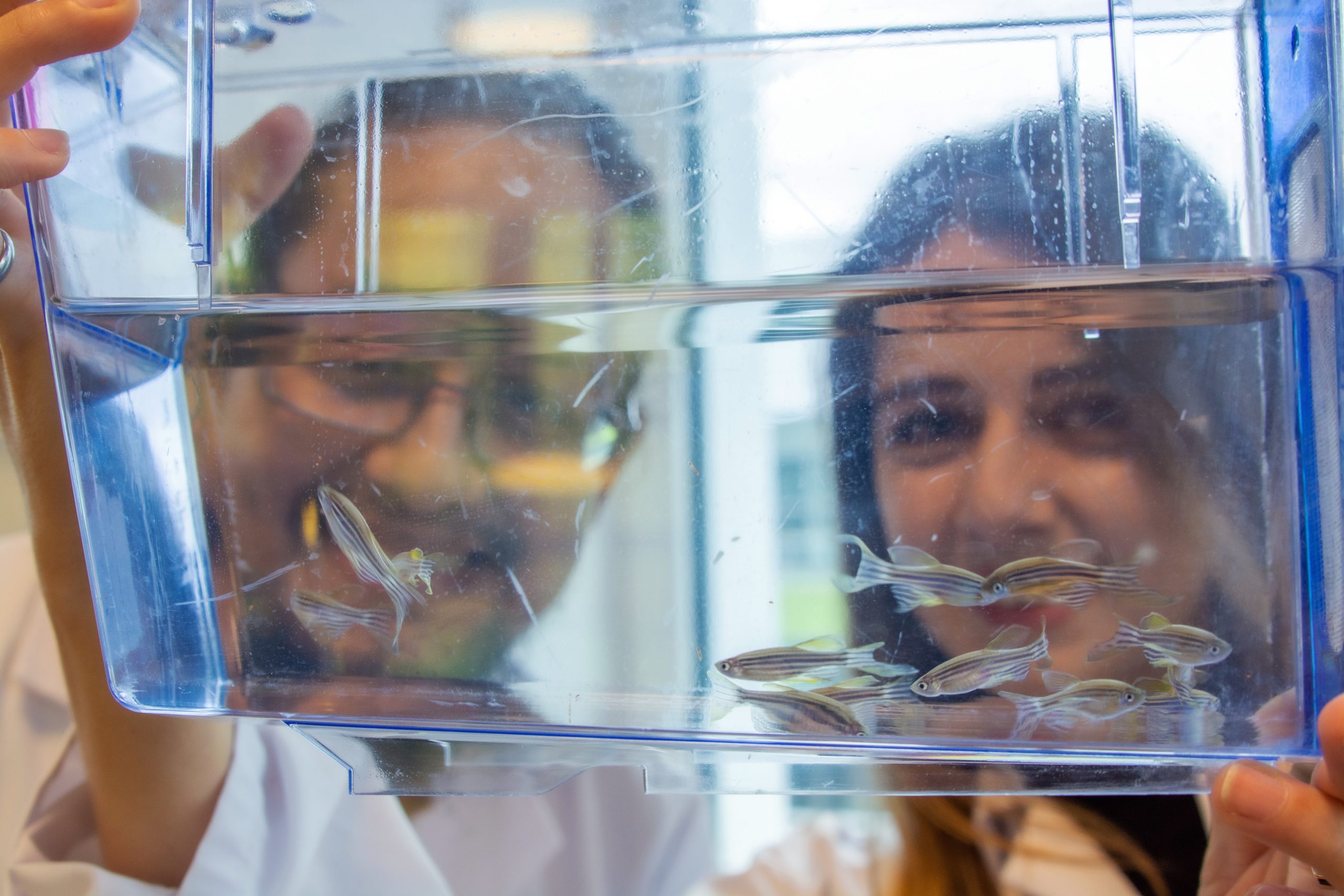January in preprints
Posted by the Node, on 3 February 2023
Welcome to our monthly trawl for developmental and stem cell biology (and related) preprints. Congratulations to all the researchers who kicked off 2023 by preprinting their research.
The preprints this month are hosted on bioRxiv – use these links to get to the section you want.
- Patterning & signalling
- Morphogenesis & mechanics
- Genes & genomes
- Stem cells, regeneration & disease modelling
- Plant development
- Evo-devo
Developmental biology
| Patterning & signalling
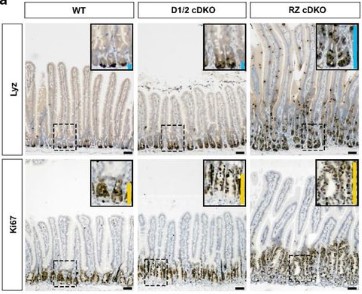
Intestinal Paneth cell differentiation relies on asymmetric regulation of Wnt signaling by Daam1/2
Gabriele Colozza, Heetak Lee, Alessandra Merenda, Szu-Hsien Sam Wu, Andrea Català-Bordes, Tomasz W. Radaszkiewicz, Ingrid Jordens, Ji-Hyun Lee, Aileen-Diane Bamford, Fiona Farnhammer, Teck Yew Low, Madelon M. Maurice, Vítězslav Bryja, Jihoon Kim, Bon-Kyoung Koo
Notch1 cortical signaling regulates epithelial architecture and cell-cell adhesion
Matthew J. White, Kyle A. Jacobs, Tania Singh, Matthew L. Kutys
Characterization of 3D organotypic epithelial tissues reveals tonsil-specific differences in tonic interferon signaling
Robert Jackson, Esha V Rajadhyaksha, Reid S Loeffler, Caitlyn E Flores, Koenraad Van Doorslaer
Spatial transcriptomics reveals a conserved segment polarity program that governs muscle patterning in Nematostella vectensis
Shuonan He, Wanqing Shao, Shiyuan (Cynthia) Chen, Ting Wang, Matthew C. Gibson
Foveolar cone subtype patterning in human retinal organoids
Katarzyna A Hussey, Kiara Eldred, Thomas Reh, Robert J. Johnston Jr
Cup is essential for oskar mRNA translational repression during early Drosophila oogenesis
Livia V. Bayer, Samantha Milano, Stephen K. Formel, Harpreet Kaur, Rishi Ravichandran, Juan A. Cambeiro, Lizaveta Slinko, Irina E. Catrina, Diana P. Bratu
Haploid androgenetic development in bovines reveals imbalanced WNT signaling and impaired cell fate differentiation
Luis M. Aguila, Ricardo P. Nociti, Rafael V. Sampaio, Jacinthe Therrien, Flavio V. Meirelles, Ricardo N. Felmer, Lawrence C. Smith
Dynamic fate map of hindbrain rhombomeres in zebrafish
Mageshi Kamaraj, Thierry Savy, Sophie Salomé Desnoulez, Nadine Peyrieras, Monique Frain
Control of gastruloid patterning and morphogenesis by the Erk and Akt signaling pathways
Evan J. Underhill, Jared E. Toettcher
Impact of cell size on morphogen gradient precision
Jan A. Adelmann, Roman Vetter, Dagmar Iber
Wengen, a Tumour Necrosis Factor Receptor, regulates the Fibroblast Growth Factor pathway by an unconventional mechanism
Annalisa Letizia, Maria Lluisa Espinàs, Marta Llimargas
The RALF Signaling Pathway Regulates Cell Wall Integrity during Pollen Tube Growth in Maize
Liang-Zi Zhou, Lele Wang, Zengxiang Ge, Julia Mergner, Xingli Li, Bernhard Küster, Gernot Längst, Li-Jia Qu, Thomas Dresselhaus
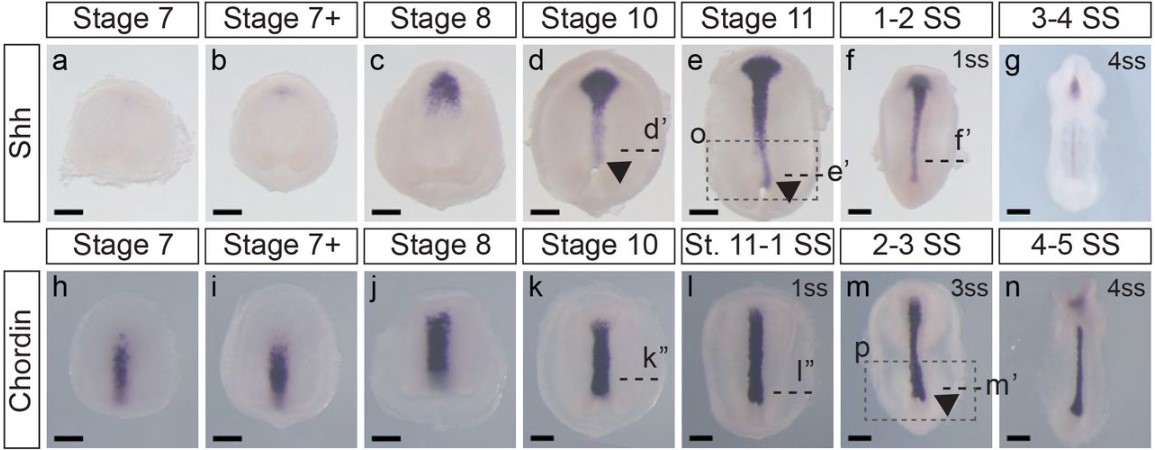
Morphological changes and two Nodal paralogs drive left-right asymmetry in the squamate veiled chameleon (C. calyptratus)
Natalia A. Shylo, Sarah E. Smith, Andrew Price, Fengli Guo, Melainia McClain, Paul Trainor
Maternal and intrauterine influences on feto-placental growth are accompanied by sexually dimorphic changes in placental mitochondrial respiration, and metabolic signalling pathways
Esteban Salazar-Petres, Daniela Pereira-Carvalho, Jorge Lopez-Tello, Amanda Nancy Sferruzzi-Perri
The phosphodiesterase 2A regulates lymphatic endothelial development via cGMP-mediated control of Notch signaling
Claudia Carlantoni, Leon Liekfeld, Sandra A. Hemkemeyer, Danny Schreier, Ceren Saygi, Roberta Kurelic, Silvia Cardarelli, Joanna Kalucka, Christian Schulte, Manu Beerens, Reiner Mailer, Tilman Schäffer, Fabio Naro, Manuela Pellegrini, Viacheslav O. Nikolaev, Thomas Renné, Maike Frye
More than germ cells: vascular development in the early zebrafish (Danio rerio) gonad
Michelle E. Kossack, Lucy Tian, Kealyn Bowie, Jessica S. Plavicki
Reduced glycolysis links resting zone chondrocyte proliferation in the growth plate
Tatsuya Kobayashi, Cameron Young, Wen Zhou, Eugene P. Rhee
Establishment of Wnt ligand-receptor organization and cell polarity in the C. elegans embryo
Pierre Recouvreux, Pritha Pai, Rémy Torro, Mónika Ludányi, Pauline Mélénec, Mariem Boughzala, Vincent Bertrand, Pierre-François Lenne
Dally is not essential for Dpp spreading or internalization but for Dpp stability by antagonizing Tkv-mediated Dpp internalization
Niklas Simon, Abu Safyan, George Pyrowolakis, Shinya Matsuda
PRDM16 restricts stem cell proliferation by integrating BMP and Wnt signalling in the developing choroid plexus
Li He, Jiayu Wen, Qi Dai
BMP suppresses WNT to integrate patterning of orthogonal body axes in adult planarians
Eleanor G. Clark, Christian P. Petersen
Wnt signaling regulates ion channel expression to promote smooth muscle and cartilage formation in developing mouse trachea
Nicholas X. Russell, Kaulini Burra, Ronak Shah, Natalia Bottasso-Arias, Megha Mohanakrishnan, John Snowball, Harshavardhana H. Ediga, Satish K Madala, Debora Sinner
Leftward transfer of a chemosensory polycystin initiates left-dominant calcium signaling for lateralized embryonic development
Yosuke Tanaka, Ai Morozumi, Nobutaka Hirokawa
Not all Notch pathway mutations are equal in the embryonic mouse retina
Bernadett Bosze, Julissa Suarez-Navarro, Illiana Cajias, Joseph A. Brzezinski IV, Nadean L Brown
The multimodal action of G alpha q in coordinating growth and homeostasis in the Drosophila wing imaginal disc
Vijay Velagala, Dharsan K. Soundarrajan, Maria F. Unger, David Gazzo, Nilay Kumar, Jun Li, Jeremiah Zartman
Follicle stimulating hormone signaling opposes the DRL-1/FLR-4 MAP Kinases to balance p38-mediated growth and lipid homeostasis in C. elegans
Sarah K. Torzone, Aaron Y. Park, Peter C. Breen, Natalie R. Cohen, Robert H. Dowen
C. elegans SMOC-1 interacts with both BMP and glypican to regulate BMP signaling
Melisa S. DeGroot, Byron Williams, Timothy Y Chang, Maria L. Maas Gamboa, Isabel Larus, J. Christopher Fromme, Jun Liu
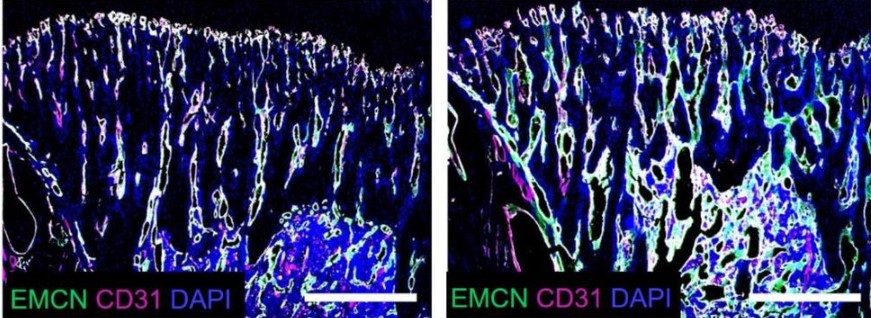
Endothelial SMAD1/5 signaling couples angiogenesis to osteogenesis during long bone growth
Annemarie Lang, Andreas Benn, Angelique Wolter, Tim Balcaen, Joseph Collins, Greet Kerckhofs, An Zwijsen, Joel D. Boerckel
The myocardium utilizes Pdgfra-PI3K signaling to steer towards the midline during heart tube formation
Rabina Shrestha, Tess McCann, Harini Saravanan, Jaret Lieberth, Prashanna Koirala, Joshua Bloomekatz
| Morphogenesis & mechanics
The mechanics of cephalic furrow formation in the Drosophila embryo
Redowan A. Niloy, Michael C. Holcomb, Jeffrey H. Thomas, Jerzy Blawzdziewicz
Mechanical forces in extendable tissue matrix orient cell divisions via microtubule stabilization in Arabidopsis
Lukas Hoermayer, Juan Carlos Montesinos, Leonhard Spona, Saiko Yoshida, Petra Marhava, Silvia Caballero-Mancebo, Eva Benková, Carl-Philip Heisenberg, Jiří Friml
KDM2B regulates hippocampal morphogenesis by transcriptionally silencing Wnt signaling in neural progenitors
Bo Zhang, Chen Zhao, Wenchen Shen, Wei Li, Yue Zheng, Xiangfei Kong, Junbao Wang, Xudong Wu, Ying Liu, Yan Zhou
Temporal variability and cell mechanics control robustness in mammalian embryogenesis
Dimitri Fabrèges, Bernat Corominas Murtra, Prachiti Moghe, Alison Kickuth, Takafumi Ichikawa, Chizuru Iwatani, Tomoyuki Tsukiyama, Nathalie Daniel, Julie Gering, Anniek Stokkermans, Adrian Wolny, Anna Kreshuk, Véronique Duranthon, Virginie Uhlmann, Edouard Hannezo, Takashi Hiiragi
Anoctamin 10/TMEM16K mediates convergent extension and tubulogenesis during notochord formation in the early chordate Ciona intestinalis
Zonglai Liang, Daniel Christiaan Dondorp, Marios Chatzigeorgiou
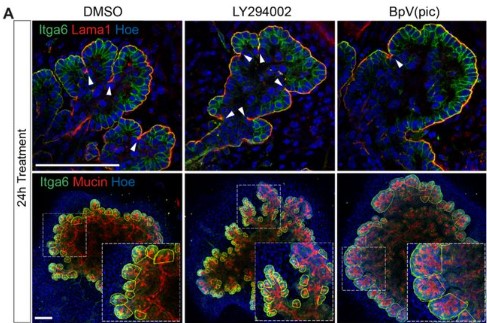
Acinar-ductal cell rearrangement drives pancreas branching morphogenesis in an IGF/PI3K-dependent manner
Jean-Francois Darrigrand, Anna Salowka, Francesca M. Spagnoli
YAP and TAZ couple osteoblast precursor mobilization to angiogenesis and mechanoregulated bone development
Joseph M. Collins, Annemarie Lang, Cristian Parisi, Yasaman Moharrer, Madhura P. Nijsure, Jong Hyun (Thomas) Kim, Greg L. Szeto, Ling Qin, Riccardo L. Gottardi, Nathanial A. Dyment, Niamh C. Nowlan, Joel D. Boerckel
Mechanical models affecting beetle horn remodeling
Keisuke Matsuda, Haruhiko Adachi, Hiroki Gotoh, Yasuhiro Inoue, Shigeru Kondo
Spatio-temporal remodeling of extracellular matrix orients epithelial sheet folding
Alice Tsuboi, Koichi Fujimoto, Takefumi Kondo
Information integration during bioelectric regulation of morphogenesis in the embryonic frog brain
Santosh Manicka, Vaibhav P. Pai, Michael Levin
Durotaxis bridges phase transition as a function of tissue stiffness in vivo
Min Zhu, Bin Gu, Evan Thomas, Hirotaka Tao, Theodora M. Yung, Kaiwen Zhang, Janet Rossant, Yu Sun, Sevan Hopyan
| Genes & genomes
Modulating the epigenetic state promotes the reprogramming of transformed cells to pluripotency in a line-specific manner
Xiuling Fu, Qiang Zhuang, Isaac A. Babarinde, Liyang Shi, Gang Ma, Haoqing Hu, Yuhao Li, Jiao Chen, Zhen Xiao, Boping Deng, Li Sun, Ralf Jauch, Andrew P. Hutchins
Genomic resources enable insight into the developmental transcriptome of the blastoclad fungus, Coelomomyces lativittatus, an obligate parasite of mosquitoes and microcrustaceans
Cassandra L. Ettinger, Talieh Ostovar, Mark Yacoub, Steven Ahrendt, Robert H. Hice, Brian A. Federici, Jason E. Stajich
An epigenetic basis of adaptive plasticity in Drosophila melanogaster
Abigail DiVito Evans, Regina A. Fairbanks, Paul Schmidt, Mia T. Levine
Spatial enhancer activation determines inhibitory neuron identity
Elena Dvoretskova, May C. Ho, Volker Kittke, Ilaria Vitali, Daniel D. Lam, Irene Delgado, Chao Feng, Miguel Torres, Juliane Winkelmann, Christian Mayer
scMultiome analysis identifies embryonic hindbrain progenitors with mixed rhombomere identities
Yong-Il Kim, Rebecca O’Rourke, Charles G. Sagerström
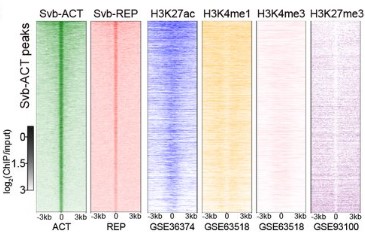
Crosstalk between chromatin and the transcription factor Shavenbaby defines transcriptional output along the Drosophila intestinal stem cell lineage
Alexandra Mancheno-Ferris, Clément Immarigeon, Alexia Rivero, David Depierre, Nicolas Chanard, Olivier Fosseprez, Gabriel Aughey, Priscilla Lhoumaud, Julien Anglade, Tony Southall, Serge Plaza, Olivier Cuvier, François Payre, Cédric Polesello
Eomes restricts Brachyury functions at the onset of mammalian gastrulation
Katrin M. Schüle, Jelena Weckerle, Simone Probst, Alexandra E. Wehmeyer, Lea Zissel, Chiara M. Schröder, Mehmet Tekman, Gwang-Jin Kim, Inga-Marie Schlägl, Sagar, Sebastian J. Arnold
Single cell transcriptomics of human prenatal anterior foregut-derived organs identifies distinct developmental signatures directing commitment and specialization of the thymic epithelial stroma
Abdulvasey Mohammed, Benjamin Solomon, Priscila F. Slepicka, Kelsea M. Hubka, Hanh Dan Nguyen, Michael G. Chavez, Christine Y. Yeh, Virginia D. Winn, Casey A. Gifford, Purvesh Khatri, Andrew Gentles, Katja G. Weinacht
Cellular remodeling and JAK inhibition promote zygotic gene expression in the Ciona germline
Naoyuki Ohta, Lionel Christiaen
A transcriptional and regulatory map of mouse somitogenesis
Ximena Ibarra-Soria, Elodie Thierion, Gi Fay Mok, Andrea E. Münsterberg, Duncan T. Odom, John C. Marioni
YTHDC2 serves a distinct late role in spermatocytes during germ cell differentiation
Alexis S. Bailey, Margaret T. Fuller
Mitochondrial citrate metabolism and efflux regulates trophoblast differentiation
Renee M. Mahr, Snehalata Jena, Sereen K. Nashif, Alisa B. Nelson, Adam J. Rauckhorst, Ferrol I. Rome, Ryan D. Sheldon, Curtis C. Hughey, Patrycja Puchalska, Micah D. Gearhart, Eric B. Taylor, Peter A. Crawford, Sarah A. Wernimont
Whole transcriptome profiling of placental pathobiology in SARS-CoV-2 pregnancies identifies a preeclampsia-like gene signature
Nataly Stylianou, Ismail Sebina, Nicholas Matigian, James Monkman, Hadeel Doehler, Joan Röhl, Mark Allenby, Andy Nam, Liuliu Pan, Anja Rockstroh, Habib Sadeghirad, Kimberly Chung, Thais Sobanski, Ken O’Byrne, Patricia Zadorosnei Rebutini, Cleber Machado-Souza, Emanuele Therezinha Schueda Stonoga, Majid E Warkiani, Carlos Salomon, Kirsty Short, Lana McClements, Lucia de Noronha, Ruby Huang, Gabrielle T. Belz, Fernando Souza-Fonseca-Guimaraes, Vicki Clifton, Arutha Kulasinghe
Determinants of renin cell differentiation: a single cell epi-transcriptomics approach
Alexandre G Martini, Jason P. Smith, Silvia Medrano, Nathan C. Sheffield, Maria Luisa S. Sequeira-Lopez, R. Ariel Gomez
NuRD independent Mi-2 activity represses ectopic gene expression during neuronal maturation
Gabriel N Aughey, Elhana Forsberg, Krista Grimes, Shen Zhang, Tony D Southall
Dbx2, an aging-related homeobox gene, inhibits the proliferation of adult neural progenitors
Andrea Giuliani, Valerio Licursi, Paola S. Nisi, Mario Fiore, Stefano Biagioni, Rodolfo Negri, Peter J. Rugg-Gunn, Emanuele Cacci, Giuseppe Lupo
Nr5a2 is essential for morula development
Nicola Festuccia, Sandrine Vandormael-Pournin, Almira Chervova, Anna Geiselman, Francina Langa-Vives, Rémi-Xavier Coux, Inma Gonzalez, Michel Cohen-Tannoudji, Pablo Navarro
DMRT1 is a Testis Determining Gene in Rabbits and is Also Essential for Female Fertility
Emilie Dujardin, Marjolaine André, Aurélie Dewaele, Béatrice Mandon-Pépin, Francis Poulat, Anne Frambourg, Dominique Thépot, Luc Jouneau, Geneviève Jolivet, Eric Pailhoux, Maëlle Pannetier
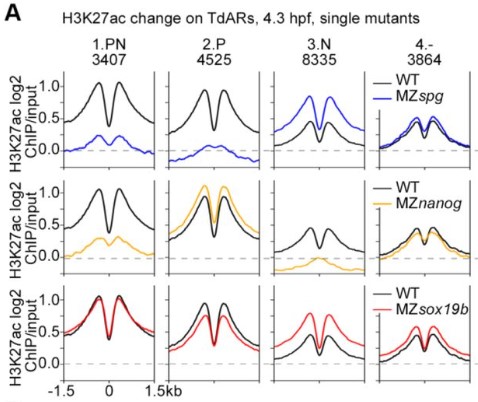
Activator-blocker model of transcriptional regulation by pioneer-like factors
Aileen Julia Riesle, Meijiang Gao, Marcus Rosenblatt, Jacques Hermes, Helge Hass, Anna Gebhard, Marina Veil, Björn Grüning, Jens Timmer, Daria Onichtchouk
DNA elements tether canonical Polycomb Repressive Complex 1 to human genes
Juan I. Barrasa, Tatyana G. Kahn, Moa J. Lundkvist, Yuri B. Schwartz
Single-cell response to Wnt activation in human embryonic stem cells reveals uncoupling of Wnt target gene expression
Simon Söderholm, Amaia Jauregi-Miguel, Pierfrancesco Pagella, Valeria Ghezzi, Gianluca Zambanini, Anna Nordin, Claudio Cantù
Single-cell transcriptomic profiling redefines the origin and specification of early adrenogonadal progenitors
Yasmine Neirijnck, Pauline Sararols, Françoise Kühne, Chloé Mayère, Serge Nef, Andreas Schedl
Modulation of protein-DNA binding reveals mechanisms of spatiotemporal gene control in early Drosophila embryos
Sahla Syed, Yifei Duan, Bomyi Lim
INO80 regulates chromatin accessibility to facilitate meiotic sex chromosome inactivation
Prabuddha Chakraborty, Terry Magnuson
Transient loss of Polycomb components induces an epigenetic cancer fate
V. Parreno, V. Loubière, B. Schuettengruber, M. Erokhin, B. Győrffy, M. Di Stefano, L. Fritsch, J. Moreaux, D. Chetverina, A-M. Martinez, G. Cavalli
Loss of NR5A1 in Sertoli cells after sex determination changes their cellular identity and induces their death by anoikis
Sirine Souali-Crespo, Diana Condrea, Nadège Vernet, Betty Féret, Muriel Klopfenstein, Erwan Grandgirard, Violaine Alunni, Marie Cerciat, Matthieu Jung, Chloé Mayere, Serge Nef, Manuel Mark, Frédéric Chalmel, Norbert B. Ghyselinck
TOBF1 modulates mouse embryonic stem cell fate through co-transcriptional regulation of alternative splicing
Meghali Aich, Asgar Hussain Ansari, Li Ding, Vytautas Iesmantavicius, Deepanjan Paul, Chunaram Choudhary, Souvik Maiti, Frank Buchholz, Debojyoti Chakraborty
| Stem cells, regeneration & disease modelling
IRF1 regulates self-renewal and stress-responsiveness to support hematopoietic stem cell maintenance
Alexandra Rundberg Nilsson, Hongxu Xian, Shabnam Shalapour, Jörg Cammenga, Michael Karin
The Sin3B chromatin modifier restricts cell cycle progression to dictate hematopoietic stem cell differentiation
Alexander Calderon, Tamara Mestvirishvili, Francesco Boccalatte, Kelly V. Ruggles, Gregory David
Cell division tracing combined with single-cell transcriptomics reveals new cell types and differentiation paths in the regenerating mouse lung
Leila R. Martins, Lina Sieverling, Michelle Michelhans, Chiara Schiller, Cihan Erkut, Sergio Triana, Stefan Fröhling, Lars Velten, Hanno Glimm, Claudia Scholl
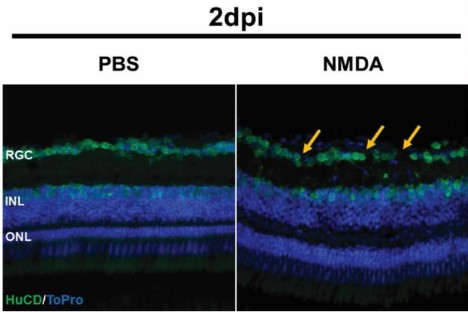
Damage-induced senescent immune cells regulate regeneration of the zebrafish retina
Gregory Konar, Zachary Flickinger, Shivani Sharma, Kyle Vallone, Charles Lyon, Claire Doshier, William Lyon, James G. Patton
Age-dependent structural and morphological changes of the stem cell niche disrupt spatiotemporal regulation of stem cells and drive tissue disintegration
Michelle A. Urman, Nimmy S. John, ChangHwan Lee
TGFB1 Induces Fetal Reprogramming and Enhances Intestinal Regeneration
Lei Chen, Abigail Dupre, Xia Qiu, Oscar Pellon-Cardenas, Katherine D. Walton, Jianming Wang, Ansu O. Perekatt, Wenwei Hu, Jason R. Spence, Michael P. Verzi
Dominant-negative mutations in CBX1 cause a neurodevelopmental disorder
Yukiko Kuroda, Aiko Iwata-Otsubo, Kerith-Rae Dias, Suzanna E.L. Temple, Koji Nagao, Lachlan De Hayr, Ying Zhu, Shin-Ya Isobe, Gohei Nishibuchi, Sarah K Fiordaliso, Yuki Fujita, Alyssa L. Rippert, Samuel W Baker, Marco L. Leung, Daniel C. Koboldt, Adele Harman, Beth A. Keena, Izumi Kazama, Gopinath Musuwadi Subramanian, Kandamurugu Manickam, Betsy Schmalz, Maeson Latsko, Elaine H Zackai, Matt Edwards, Carey-Anne Evans, Matthew C. Dulik, Michael F. Buckley, Toshihide Yamashita, W. Timothy O’Brien, Robert J. Harvey, Chikashi Obuse, Tony Roscioli, Kosuke Izumi
Conditional blastocyst complementation of a defective Foxa2 lineage efficiently promotes generation of the whole lung
Akihiro Miura, Hemanta Sarmah, Junichi Tanaka, Youngmin Hwang, Anri Sawada, Yuko Shimamura, Yinshan Fang, Dai Shimizu, Zurab Ninish, Jake Le Suer, Nicole C. Dubois, Jennifer Davis, Shinichi Toyooka, Jun Wu, Jianwen Que, Finn J. Hawkins, Chyuan-Sheng Lin, Munemasa Mori
RUNX1 is required in granulocyte-monocyte progenitors to attenuate inflammatory cytokine production by neutrophils
Alexandra U. Zezulin, Darwin Ye, Elizabeth Howell, Daniel Yen, Erica Bresciani, Jamie Diemer, Jian-gang Ren, Mohd Hafiz Ahmad, Lucio H. Castilla, Ivo P. Touw, Andy J. Minn, Wei Tong, P. Paul Liu, Kai Tan, Wenbao Yu, Nancy A. Speck
Mutation of gabra1 is associated with hypermotility and abnormal expression of proteins critical for ion homeostasis and synaptic vesicle transport
Nayeli G. Reyes-Nava, Isaiah Perez, Brian Grajeda, Igor L. Estevao, Cameron C. Ellis, Sourav Roy, Anita M. Quintana
Fetal exposure to endocrine disrupting-bisphenol A (BPA) alters testicular fatty acid metabolism in the adult offspring: relevance to sperm maturation and quality
Saikanth Varma, Archana Molangiri, Suryam Reddy Kona, Ahamed Ibrahim, Asim K Duttaroy, Sanjay Basak
scRNAseq unravels the transcriptional network underlying zebrafish retina regeneration
Laura Celotto, Fabian Rost, Anja Machate, Juliane Bläsche, Andreas Dahl, Anke Weber, Stefan Hans, Michael Brand
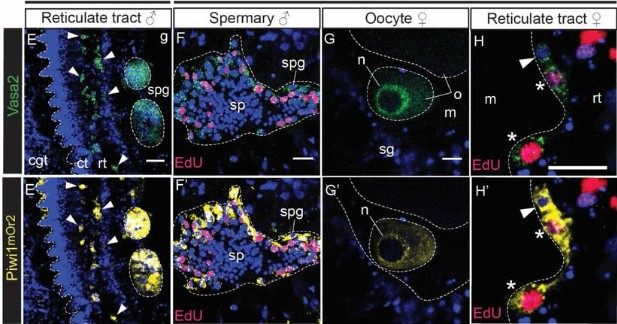
An adult stem-like cell population generates germline and neurons in the sea anemone Nematostella vectensis
Paula Miramón-Puértolas, Patrick R.H. Steinmetz
Abnormal chondrocyte intercalation in a zebrafish model of cblC syndrome restored by an MMACHC cobalamin binding mutant
David Paz, Briana E. Pinales, Barbara S. Castellanos, Isaiah Perez, Claudia B. Gil, Lourdes Jimenez Madrigal, Nayeli G. Reyes-Nava, Victoria L. Castro, Jennifer L. Sloan, Anita M. Quintana
Nutrient-regulated dynamics of chondroprogenitors in the postnatal murine growth plate
Takeshi Oichi, Joe Kodama, Kimberly Wilson, Hongying Tian, Yuka Imamura, Yu Usami, Yasushi Oshima, Taku Saito, Sakae Tanaka, Masahiro Iwamoto, Satoru Otsuru, Motomi Iwamoto-Enomoto
Spatiotemporal reconstruction of the origin and assembly of smooth muscles in the intestinal villus
Bhargav D. Sanketi, Madhav Mantri, Mohammad A. Tavallaei, Shing Hu, Michael F. Z. Wang, Iwijn De Vlaminck, Natasza A. Kurpios
Coordinated multiple cellular processes in tongue development
Maiko Kawasaki, Katsushige Kawasaki, Finsa Tisna Sari, Takehisa Kudo, Jun Nihara, Madoka Kitamura, Takahiro Nagai, Vanessa Utama, Yoko Ishida, Fumiya Meguro, Takayuki Nishimura, Yuan Kogure, Satoshi Maruyama, Jun-ichi Tanuma, Yoshito Kakihara, Takeyasu Maeda, Sarah Ghafoor, Roman H. Khonsari, Pierre Corre, Paul T. Sharpe, Martyn T. Cobourne, Brunella Franco, Atsushi Ohazama
Apical expansion of calvarial osteoblasts and suture patency is dependent on graded fibronectin cues
Xiaotian Feng, Helen Molteni, Megan Gregory, Jennifer Lanza, Nikaya Polsani, Rachel Wyetzner, M. Brent Hawkins, Greg Holmes, Sevan Hopyan, Matthew P. Harris, Radhika P. Atit
Biallelic Variants in MAD2L1BP (p31comet) Cause Female Infertility Characterized by Oocyte Maturation Arrest
Lingli Huang, Wenqing Li, Xingxing Dai, Shuai Zhao, Bo Xu, Fengsong Wang, Ren-Tao Jin, Lihua Luo, Liming Wu, Xue Jiang, Yu Cheng, Jiaqi Zou, Caoling Xu, Xianhong Tong, Heng-yu Fan, Han Zhao, Jianqiang Bao
SMIM36, a novel and conserved microprotein, is involved in retinal lamination in zebrafish
Surbhi Sharma, Soundhar Ramasamy, Yasmeen Khan, Dheeraj Chandra Joshi, Beena Pillai
The exon junction complex component EIF4A3 is essential for mouse and human cortical progenitor mitosis and neurogenesis
Bianca M. Lupan, Rachel A. Solecki, Camila Manso Musso, Fernando C. Alsina, Debra L. Silver
Production of β-PheRS fragments correlates with food avoidance and slow growth, and is suppressed by the appetite-inducing hormone CCHa2
Dominique Brunßen, Beat Suter
Maternal exposure to environmental levels of carbamazepine induces mild growth retardation in mouse embryos
Douek-Maba Orit, Kalev-Altman Rotem, Mordehay Vered, Hayby-Averbuch Hilla, Shlezinger Neta, Chefetz Benny, Sela-Donenfeld Dalit
Adult stem cell characterization from the Medial Gastrocnemius and Semitendinosus muscles in early development of cerebral palsy pathology
M Corvelyn, J Meirlevede, J Deschrevel, E Huyghe, E De Wachter, G Gayan-Ramirez, M Sampaolesi, A Van Campenhout, K Desloovere, D Costamagna

The neurodevelopmental transcriptome of the Drosophila melanogaster microcephaly gene abnormal spindle reveals a role for temporal transcription factors and the immune system in regulating brain size
Maria C. Mannino, Mercedes Bartels Cassidy, Steven Florez, Zeid Rusan, Shalini Chakraborty, Todd Schoborg
Six3 acts independently of Pax6 to provide an essential contribution to lens development
Sumanth Manohar, Takuya Nakayama, Marilyn Fisher, Robert M. Grainger
Macrophage activation drives ovarian failure and masculinization
Paloma Bravo, Yulong Liu, Bruce W. Draper, Florence L. Marlow
Directed differentiation of human hindbrain neuroepithelial stem cells recapitulates cerebellar granule neurogenesis
Biren M. Dave, Xin Chen, Fraser McCready, Jignesh K. Tailor, James Ellis, Xi Huang, Peter B. Dirks
Defining Cardiac Nerve Architecture During Development, Disease, and Regeneration
Rebecca J. Salamon, Poorva Halbe, William Kasberg, Jiyoung Bae, Anjon Audhya, Ahmed I. Mahmoud
| Plant development
Three-dimensional morphological analysis revealed the cell patterning bases for the sexual dimorphism development in the liverwort Marchantia polymorpha
Yihui Cui, Tetsuya Hisanaga, Tomoaki Kajiwara, Shohei Yamaoka, Takayuki Kohchi, Tatsuaki Goh, Keiji Nakajima
AGAMOUS mediates timing of guard cell formation during gynoecium development
Ailbhe J. Brazel, Róisín Fattorini, Jesse McCarthy, Rainer Franzen, Florian Rümpler, George Coupland, Diarmuid S. Ó’Maoiléidigh
Establishment of cell transcriptional identity during seed germination
Lim Chee Liew, Yue You, Marina Oliva, Marta Peirats-Llobet, Sophia Ng, Muluneh Tamiru-Oli, Oliver Berkowitz, Uyen Vu Thuy Hong, Asha Haslem, Tim Stuart, Matthew E. Ritchie, George W. Bassel, Ryan Lister, James Whelan, Quentin Gouil, Mathew G. Lewsey
Sugar signaling modulates SHOOT MERISTEMLESS expression and meristem function in Arabidopsis
Filipa L. Lopes, Pau Formosa-Jordan, Alice Malivert, Leonor Margalha, Ana Confraria, Regina Feil, John E. Lunn, Henrik Jönsson, Benoît Landrein, Elena Baena-González
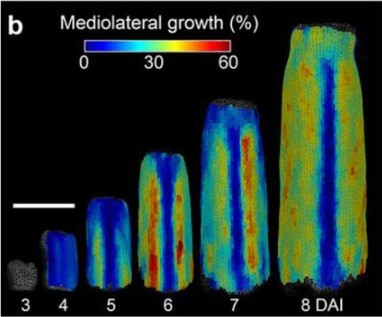
Competing differentiation gradients coordinate fruit morphogenesis
A. Gómez-Felipe, M. Marconi, E. Branchini, B. Wang, H. Bertrand-Rakusova, T. Stan, J. Burkiewicz, S. de Folter, A-L. Routier-Kierzkowska, K. Wabnik, D. Kierzkowski
Microbe-induced plant drought tolerance by ABA-mediated root morphogenesis and epigenetic reprogramming of gene expression
Khairiah M. Alwutayd, Anamika A. Rawat, Arsheed H. Sheikh, Marilia Almeida-Trapp, Alaguraj Veluchamy, Rewaa Jalal, Michael Karampelias, Katja Froehlich, Waad Alzaed, Naheed Tabassum, Thayssa Rabelo Schley, Anton R. Schaeffner, Ihsanullah Daur, Maged M. Saad, Heribert Hirt
| Evo-devo
Wolbachia is a nutritional symbiont
Amelia RI Lindsey, Audrey J Parish, Irene LG Newton, Jason M Tennessen, Megan W Jones, Nicole Stark
Systemic orchestration of cell size throughout the body: Influence of sex and rapamycin exposure in Drosophila melanogaster
Ewa Szlachcic, Anna Maria Labecka, Valeriya Privalova, Anna Sikorska, Marcin Czarnoleski
Evolutionary history of the Brachyury gene in Hydrozoa: duplications, divergence and neofunctionalization
Alexandra A. Vetrova, Daria M. Kupaeva, Tatiana S. Lebedeva, Peter Walentek, Nikoloz Tsikolia, Stanislav V. Kremnyov
Cell Biology
Spontaneous rotations in epithelia as an interplay between cell polarity and boundaries.
Simon Lo Vecchio, Olivier Pertz, Marcela Szopos, Laurent Navoret, Daniel Riveline
Nhsl1b regulates mesodermal cell migration by controlling protrusion dynamics during zebrafish gastrulation
Sophie Escot, Amélie Elouin, Lucille Mellottee, Nicolas B David
Newly born mesenchymal cells disperse through a rapid mechanosensitive migration
Jon Riddell, Shahzeb Raja Noureen, Luigi Sedda, James D. Glover, William K. W. Ho, Connor A. Bain, Arianna Berbeglia, Helen Brown, Calum Anderson, Yuhang Chen, Michael L. Crichton, Christian A. Yates, Richard L. Mort, Denis J. Headon
A planar-polarized MYO6-DOCK7-RAC1 axis promotes tissue fluidification in mammary epithelia
Luca Menin, Janine Weber, Stefano Villa, Emanuele Martini, Elena Maspero, Valeria Cancila, Paolo Maiuri, Andrea Palamidessi, Emanuela Frittoli, Fabrizio Bianchi, Claudio Tripodo, Kylie J. Walters, Fabio Giavazzi, Giorgio Scita, Simona Polo
The Shot CH1 domain recognises a distinct form of F-actin during Drosophila oocyte determination
D. Nashchekin, I. Squires, A. Prokop, D. St Johnston
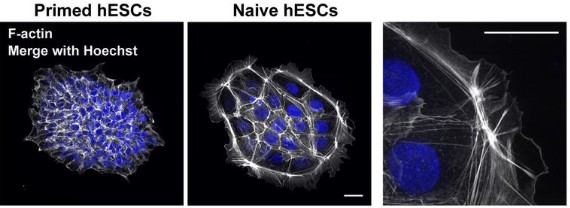
Arp2/3 Complex Activity Enables Nuclear YAP for Naïve Pluripotency of Human Embryonic Stem Cells
Nathaniel P. Meyer, Tania Singh, Matthew L. Kutys, Todd Nystul, Diane L. Barber
SCAR and the Arp2/3 complex polarise the actomyosin cortex and plasma membrane organization in asymmetrically dividing neuroblasts
Giulia Cazzagon, Chantal Roubinet, Buzz Baum
Sperm-contributed centrioles segregate stochastically into blastomeres of 4-cell stage C. elegans embryos
Pierre Gönczy, Fernando R. Balestra
Intrinsic microtubule destabilization of multiciliated choroid plexus epithelial cells during postnatal lifetime
Kim Hoa Ho, Valentina Scarpetta, Chiara Salio, Elisa D’Este, Martin Meschkat, Christian A. Wurm, Matthias Kneussel, Carsten Janke, Maria M. Magiera, Marco Sassoè-Pognetto, Monika S. Brill, Annarita Patrizi
Modelling
Unbalanced response to growth variations reshapes the cell fate decision landscape
Jingwen Zhu, Pan Chu, Xiongfei Fu
Artificial intelligence supports automated characterization of differentiated human pluripotent stem cells
Katarzyna Marzec-Schmidt, Nidal Ghosheh, Sören Richard Stahlschmidt, Barbara Küppers-Munther, Jane Synnergren, Benjamin Ulfenborg
CoVar: A generalizable machine learning approach to identify the coordinated regulators driving variational gene expression
Satyaki Roy, Shehzad Z. Sheikh, Terrence S. Furey
A Clock and Wavefront Self-Organizing model explains somitogenesis in vivo and in vitro
Julie Klepstad, Luciano Marcon
Lineage tracing identifies heterogeneous hepatoblast contribution to cell lineages and postembryonic organ growth dynamics
Iris. A. Unterweger, Julie Klepstad, Edouard Hannezo, Pia R. Lundegaard, Ala Trusina, Elke A. Ober
Machine-guided cell-fate engineering
Evan Appleton, Jenhan Tao, Greg Fonseca, Songlei Liu, Christopher Glass, George Church
Flow similarity model predicts the allometry and allometric covariation of petiole dimensions
Charles A. Price
Tools & Resources
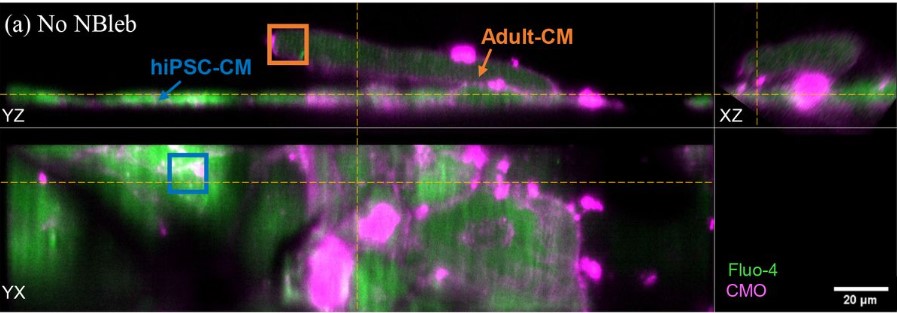
Remote-refocusing light-sheet fluorescence microscopy enables 3D imaging of electromechanical coupling of hiPSC-derived and adult cardiomyocytes in co-culture
L Dvinskikh, H Sparks, L Brito, K MacLeod, SE Harding, C Dunsby
Utilization of an Artery-on-a-chip to unravel novel regulators and therapeutic targets in vascular diseases
Valentina Paloschi, Jessica Pauli, Greg Winski, Zhiyuan Wu, Zhaolong Li, Nadiya Glukha, Nora Hummel, Felix Rogowitz, Sandro Meucci, Lorenzo Botti, Albert Busch, Ekaterina Chernogubova, Hong Jin, Nadja Sachs, Hans-Henning Eckstein, Anne Dueck, Reinier A. Boon, Andreas R. Bausch, Lars Maegdefessel
Hep3D: A 3D single-cell digital atlas of the liver to study spatio-temporal tissue architecture
Dilan Martínez, Valentina Maldonado, Cristian Pérez, Rodrigo Yañez, Valeria Candia, Yannis Kalaidzidis, Marino Zerial, Hernán Morales-Navarrete, Fabián Segovia-Miranda
Generation of human alveolar epithelial type I cells from pluripotent stem cells
Claire L Burgess, Jessie Huang, Pushpinder Bawa, Konstantinos-Dionysios Alysandratos, Kasey Minakin, Michael P Morley, Apoorva Babu, Carlos Villacorta-Martin, Anne Hinds, Bibek R Thapa, Feiya Wang, Adeline M Matschulat, Edward E Morrisey, Xaralabos Varelas, Darrell N Kotton
A 3-dimensional molecular cartography of human cerebral organoids revealed by double-barcoded spatial transcriptomics
Gwendoline Lozachmeur, Aude Bramoulle, Antoine Aubert, François Stüder, Julien Moehlin, Lucie Madrange, Frank Yates, Jean-Philippe Deslys, Marco Antonio Mendoza-Parra
Trophoblast organoids with physiological polarity model placental structure and function
Liheng Yang, Pengfei Liang, Huanghe Yang, Carolyn B. Coyne
Targeted gene deletion with SpCas9 and multiple guide RNAs in Arabidopsis thaliana: four are better than two
Jana Ordon, Niklas Kiel, Dieter Becker, Carola Kretschmer, Paul Schulze-Lefert, Johannes Stuttmann
Ultrasensitive Proteomics Depicted an In-depth Landscape for Mouse Embryo
Lei Gu, Xumiao Li, Wencheng Zhu, Yi Shen, Qinqin Wang, Huiping Zhang, Jingquan Li, Ziyi Li, Zhen Liu, Chen Li, Hui Wang
CRaTER enrichment for on-target gene-editing enables generation of variant libraries in hiPSCs
Clayton E. Friedman, Shawn Fayer, Sriram Pendyala, Wei-Ming Chien, Linda Tran, Leslie Chao, Ashley Mckinstry, Elaheh Karbassi, Aidan M. Fenix, Alexander Loiben, Charles E. Murry, Lea M. Starita, Douglas M. Fowler, Kai-Chun Yang
Targeted Screening and Identification of Chlorhexidine as a Pro-myogenic Circadian Clock Activator
Tali Kiperman, Weini Li, Xuekai Xiong, Hongzhi Li, David Horne, Ke Ma
Automated staging of zebrafish embryos with KimmelNet
David J. Barry, Rebecca A. Jones, Matthew J. Renshaw
spinDrop: a droplet microfluidic platform to maximise single-cell sequencing information content
Joachim De Jonghe, Tomasz S. Kaminski, David B. Morse, Marcin Tabaka, Anna L. Ellermann, Timo N. Kohler, Gianluca Amadei, Charlotte Handford, Gregory M. Findlay, Magdalena Zernicka-Goetz, Sarah A. Teichmann, Florian Hollfelder
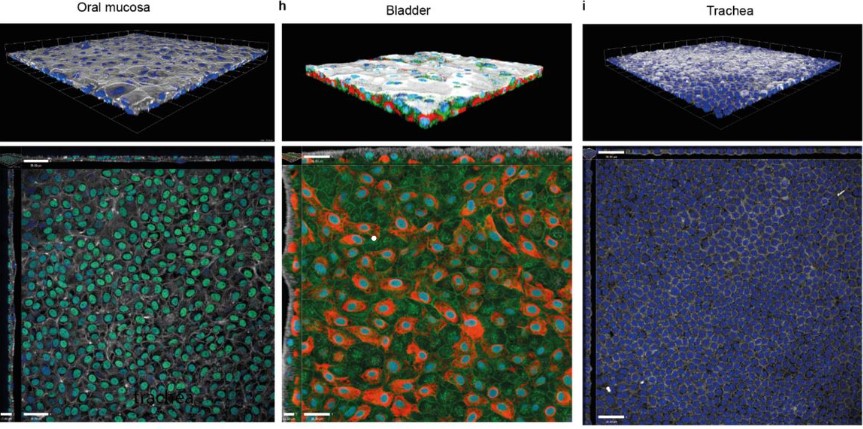
Epithelioids: Self-sustaining 3D epithelial cultures to study long-term processes
Albert Herms, David Fernandez-Antoran, Maria P. Alcolea, Argyro Kalogeropoulou, Ujjwal Banerjee, Gabriel Piedrafita, Emilie Abby, Jose Antonio Valverde-Lopez, Inês S. Ferreira, Stefan C. Dentro, Swee Hoe Ong, Bartomeu Colom, Kasumi Murai, Charlotte King, Krishnaa Mahbubani, Kourosh Saeb-Parsy, Alan R Lowe, Moritz Gerstung, Philip H Jones
Emergent dynamics of adult stem cell lineages from single nucleus and single cell RNA-Seq of Drosophila testes
Amelie A. Raz, Gabriela S. Vida, Sarah R. Stern, Sharvani Mahadevaraju, Jaclyn M. Fingerhut, Jennifer M. Viveiros, Soumitra Pal, Jasmine R. Grey, Mara R. Grace, Cameron W. Berry, Hongjie Li, Jasper Janssens, Wouter Saelens, Zhantao Shao, Chun Hu, Yukiko M. Yamashita, Teresa M. Przytycka, Brian Oliver, Julie A. Brill, Henry M. Krause, Erika L. Matunis, Helen White-Cooper, Stephen DiNardo, Margaret T. Fuller
Inducible in vivo genome editing in the sea star Patiria miniata
Olga Zueva, Veronica F. Hinman
Development of Encarsia tabacivora (Viggiani) (Hymenoptera: Aphelinidae) in nymphs of Bemisia tabaci (Gennadius) MEAN 1 (Hemiptera: Aleyrodidae)
Heidy Gamarra, Marc Sporleder, Luz Supanta, Alexander Rodríguez, Jürgen Kroschel, Jan Kreuze
CartoCell, a high-throughput pipeline for accurate 3D image analysis, unveils cell morphology patterns in epithelial cysts
Jesús A. Andrés-San Román, Carmen Gordillo-Vázquez, Daniel Franco-Barranco, Laura Morato, Antonio Tagua, Pablo Vicente-Munuera, Ana M. Palacios, María P. Gavilán, Valentina Annese, Pedro Gómez-Gálvez, Ignacio Arganda-Carreras, Luis M. Escudero
A single-cell, time-resolved profiling of Xenopus mucociliary epithelium reveals non-hierarchical model of development
Julie Lee, Andreas Fønss Møller, Shinhyeok Chae, Alexandra Bussek, Tae Joo Park, Youni Kim, Hyun-Shik Lee, Tune H. Pers, Taejoon Kwon, Jakub Sedzinski, Kedar Nath Natarajan
The Embryonic Origin of Primordial Germ Cells in the Tardigrade Hypsibius exemplaris
Kira L. Heikes, Mandy Game, Frank W. Smith, Bob Goldstein
LoxCode in vivo clonal barcoding resolves mammalian epiblast contribution to fetal organs
Tom S. Weber, Christine Biben, Denise C. Miles, Stephen Zhang, Patrick Tam, Samir Taoudi, Shalin H. Naik
Research practice & education
Talk To A Scientist: A Framework for a Webinar-Based Science Outreach Platform for Children
Shreeya Mhade, Snehal Kadam, Karishma Kaushik
Scientific civility and academic performance
Emma Camacho, Quigly Dragotakes, Isabella Hartshorn, Arturo Casadevall, Daniel L Buccino
Improving Interdisciplinary Teaching through a Complexity Lens
Sarah Neitzel, Yuhao Zhao, Carrie Diaz Eaton
A publishing infrastructure for AI-assisted academic authoring
Milton Pividori, Casey S. Greene
Experiential diversity training and science learning for college students alongside peers with intellectual and developmental disabilities
Kaelin N. Rubenzer, Jonathan T. Pierce
Fly-CURE, a Multi-institutional CURE using Drosophila, Increases Students’ Confidence, Sense of Belonging, and Persistence in Research
Julie A. Merkle, Olivier Devergne, Seth M. Kelly, Paula A. Croonquist, Cory J. Evans, Melanie A. Hwalek, Victoria L. Straub, Danielle R. Hamill, David P. Puthoff, Kenneth J. Saville, Jamie L. Siders, Zully J. Villanueva Gonzalez, Jackie K. Wittke-Thompson, Kayla L. Bieser, Joyce Stamm, Alysia D. Vrailas-Mortimer, Jacob D. Kagey
The Preprint Club – A cross-institutional, community-based approach to peer reviewing
Felix Clemens Richter, Ester Gea-Mallorquí, Nicolas Ruffin, Nicolas Vabret
Innovative Research Experiences for Underrepresented Undergraduates: A Collaborative STEM Research Program as a Pathway to Graduate School
Gokhan Hacisalihoglu
Sustained Selective Attention in Adolescence: Cognitive Development and Predictors of Distractibility at School
Michael H. Hobbiss, Nilli Lavie


 (No Ratings Yet)
(No Ratings Yet)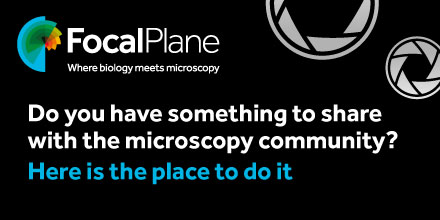
 (1 votes)
(1 votes)
